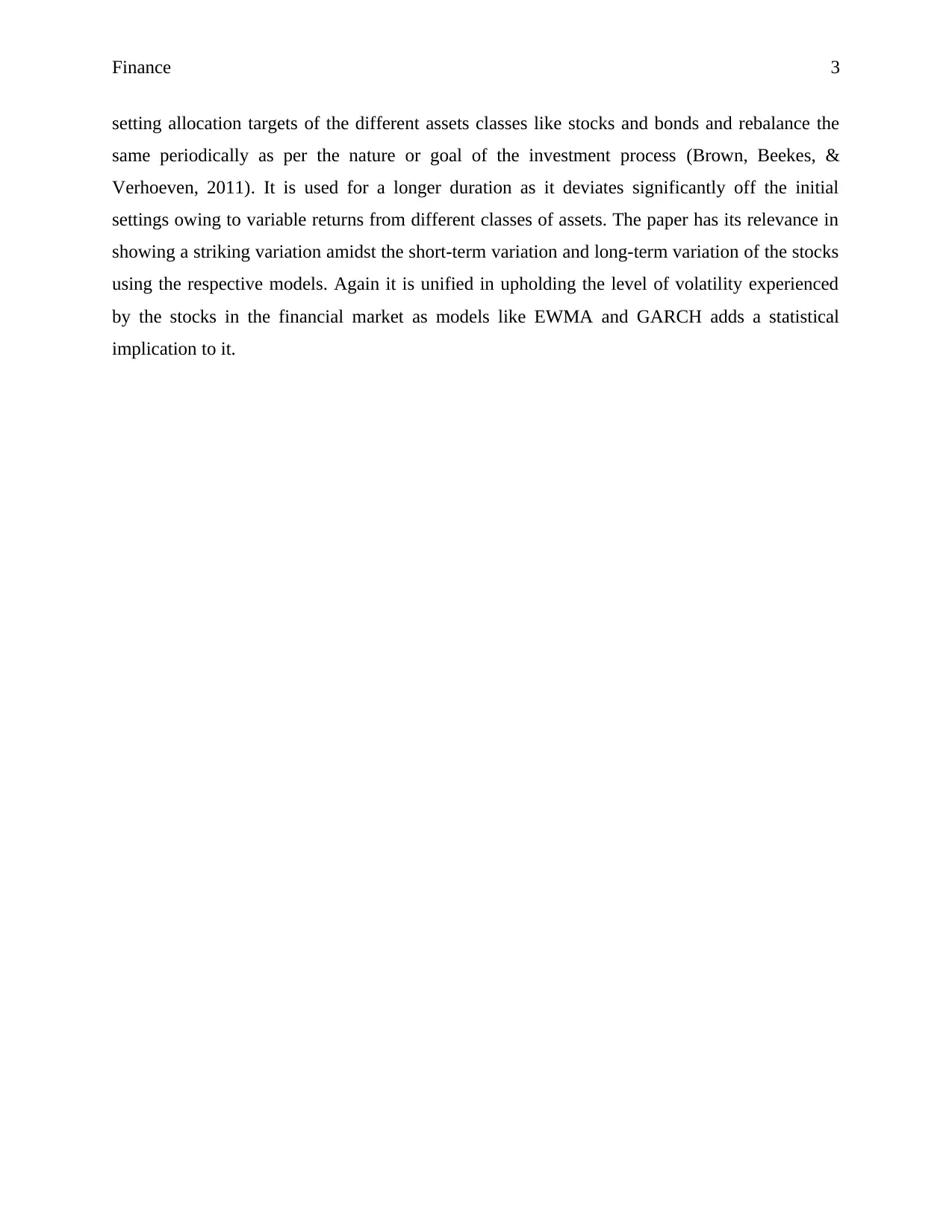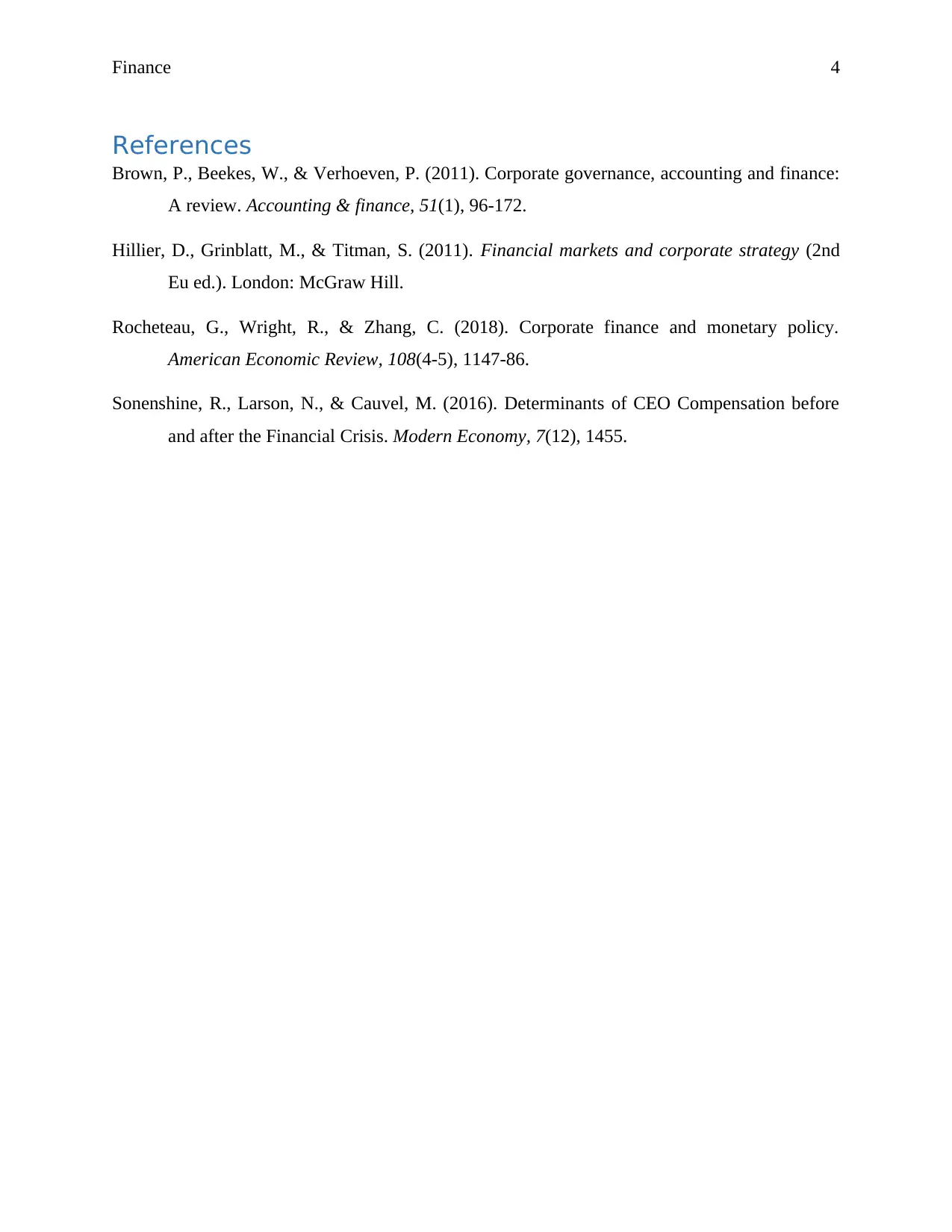A Report on Financial Market Volatility and Strategic Asset Allocation
VerifiedAdded on 2023/04/21
|4
|707
|346
Report
AI Summary
This report delves into the intricacies of financial market volatility, employing the GARCH and EWMA models to understand asset price fluctuations. It explores the application of these models in both short-term and long-term contexts, demonstrating their relevance in forecasting and strategic asset allocation over a 5-10 year period. The report highlights the significance of macroeconomic data within the GARCH model and the simplistic nature of the EWMA model. It differentiates between short-term and long-term volatility through strategic asset allocation, emphasizing the models' statistical implications in analyzing stock variations within the financial market. The paper references key academic sources to support its analysis and findings, providing a comprehensive overview of volatility in financial markets and strategic asset allocation.
1 out of 4





![[object Object]](/_next/static/media/star-bottom.7253800d.svg)